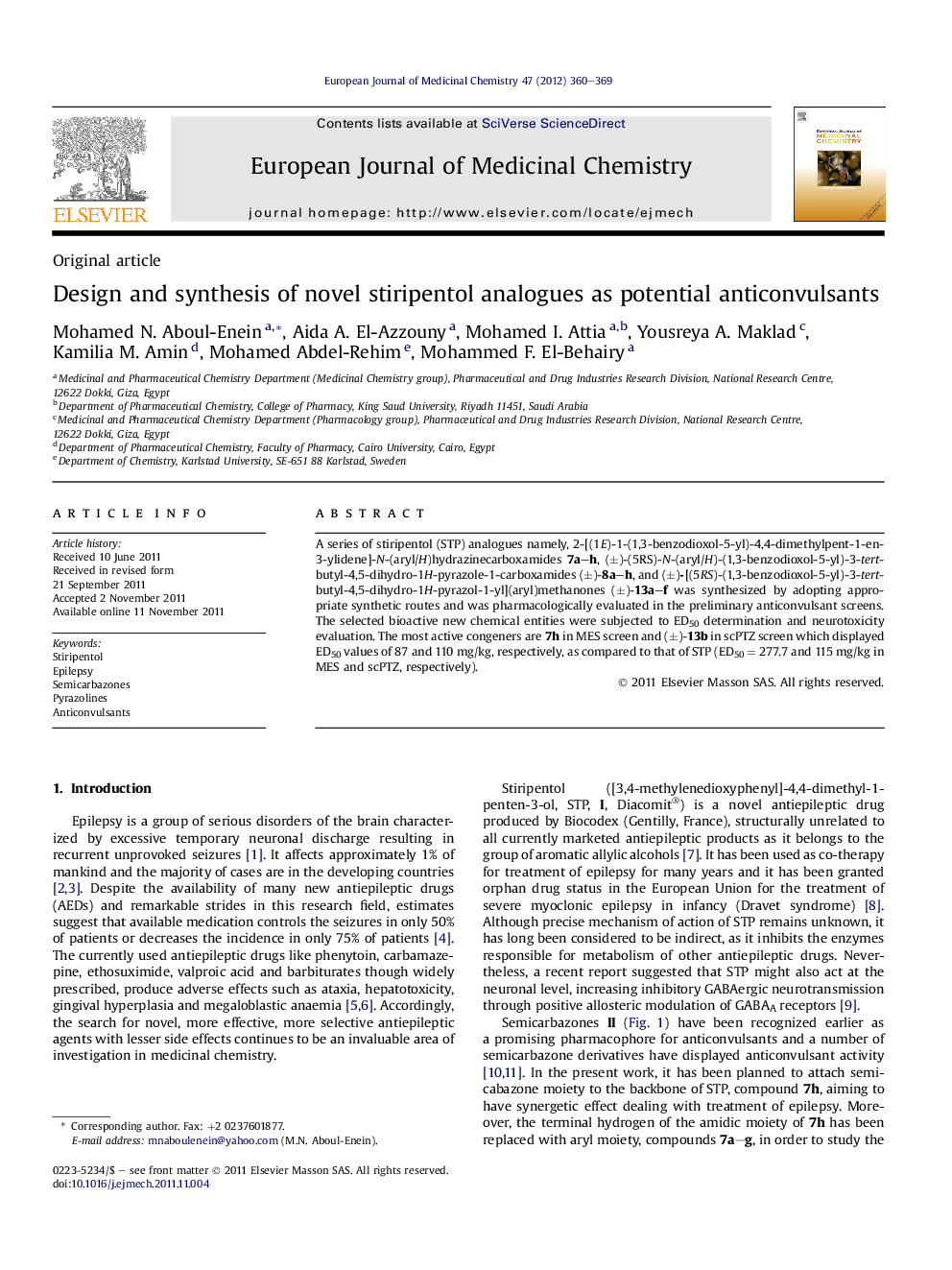| Article ID | Journal | Published Year | Pages | File Type |
|---|---|---|---|---|
| 1395970 | European Journal of Medicinal Chemistry | 2012 | 10 Pages |
A series of stiripentol (STP) analogues namely, 2-[(1E)-1-(1,3-benzodioxol-5-yl)-4,4-dimethylpent-1-en-3-ylidene]-N-(aryl/H)hydrazinecarboxamides 7a–h, (±)-(5RS)-N-(aryl/H)-(1,3-benzodioxol-5-yl)-3-tert-butyl-4,5-dihydro-1H-pyrazole-1-carboxamides (±)-8a–h, and (±)-[(5RS)-(1,3-benzodioxol-5-yl)-3-tert-butyl-4,5-dihydro-1H-pyrazol-1-yl](aryl)methanones (±)-13a–f was synthesized by adopting appropriate synthetic routes and was pharmacologically evaluated in the preliminary anticonvulsant screens. The selected bioactive new chemical entities were subjected to ED50 determination and neurotoxicity evaluation. The most active congeners are 7h in MES screen and (±)-13b in scPTZ screen which displayed ED50 values of 87 and 110 mg/kg, respectively, as compared to that of STP (ED50 = 277.7 and 115 mg/kg in MES and scPTZ, respectively).
Graphical abstractThe synthesis and anticonvulsant activity of certain novel stiripentol analogues 7a–h, (±) 8a–h, and (±) 13a–f are reported. The anticonvulsant potential of the prepared compounds was evaluated using subcutaneous pentylenetetrazole (scPTZ) and maximal electroshock seizures (MES) screens.Figure optionsDownload full-size imageDownload as PowerPoint slideHighlights► Synthesis of novel analogues of stiripentol (STP) as anticonvulsants. ► Compound 13b is the most promising new bioactive chemical entity. ► 13b displayed ED50 of 110 (93.19–129.85) mg/kg in scPTZ anticonvulsant test.
